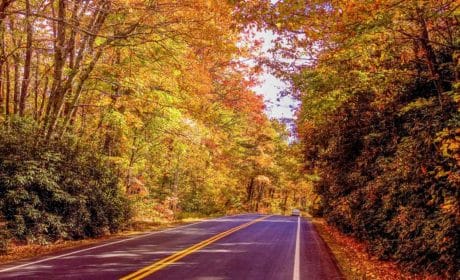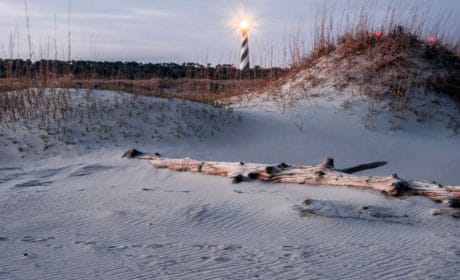Are you looking for North Carolina coast road trip ideas? In Onslow County, the wide expanse of sandy beaches, marshy estuaries and unpopulated barrier islands make for an appealing boomer travel adventure.
Featured contributor, Debi Lander of ByLanderSea, recently explored this area of the North Carolina coast for My Itchy Travel Feet. On a trip sponsored by Onslow County Visitors Bureau, Debi discovered military history, the delightful Swansboro and plenty of activities to entice boomers, in addition to beaches and islands.
Table of Contents
North Carolina Coast road trip to Onslow County
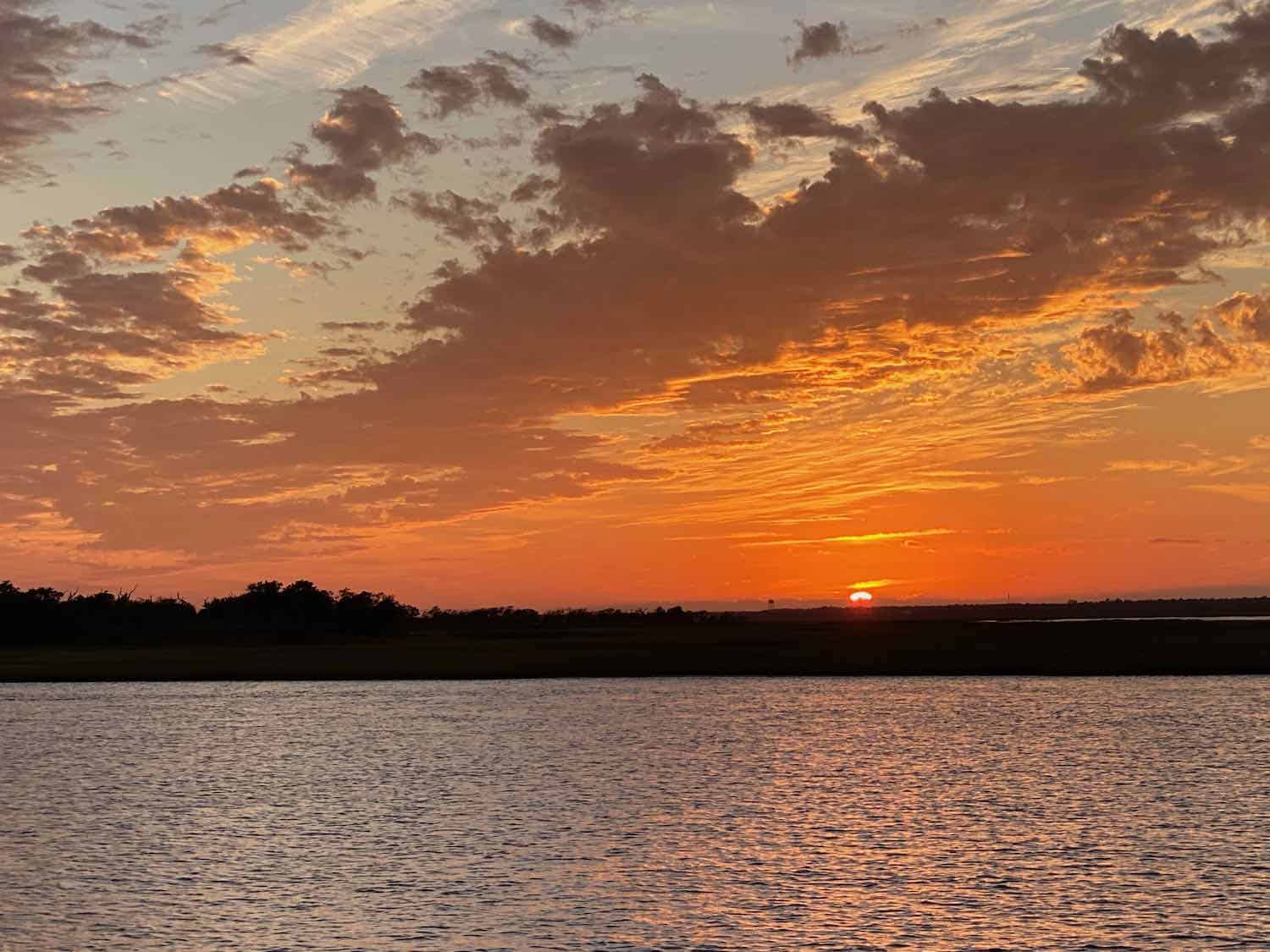
Who hasn’t heard about North Carolina’s famed Outer Banks, the barrier islands that attract hordes of summertime beach crowds and what sometimes seems like a similar number of tropical storms. Not far away, the southeastern coastal region of the state attracts far less attention, which is a shame.
There you’ll find Onslow County, where I headed from a flight landing at Jacksonville, NC. Jacksonville is the County’s most significant city.
You’ll also find towns named Richlands, Sneads Ferry, Swansboro, and North Topsail Beach. Onslow County offers a host of aquatic activities, including my favorite, sharing a workday with professional shrimpers.
Start in Jacksonville, North Carolina
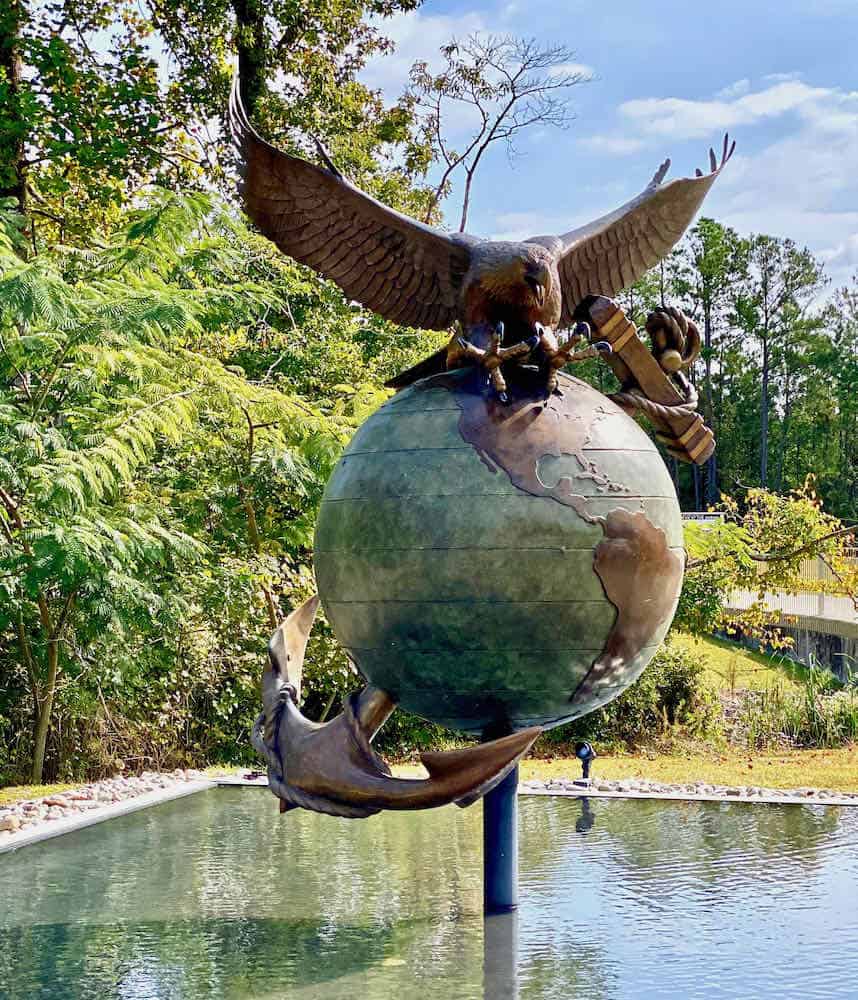
Jacksonville, NC, founded in 1842, is known as the home of Camp Lejeune, the US Marine’s largest training facility. With this strong military connection, the residents celebrate all patriotic days with flags, banners, and parades.
They also honor those who sacrificed their lives at Lejeune Memorial Gardens, a poignant, off-base memorial park. I toured the open-air facility and discovered moving tributes.
First came the Beirut Memorial and Vietnam Veterans Memorial (second-largest in the country and one that lists all the names of the fallen.). The 9/11 Memorial Beam in the garden was one of the first out of the World Trade Center.
An Eagle, Globe, and Anchor statue, the largest in the world, rests at the entryway to the Marines’ future Museum. The Freedom Fountain, a short walk away, flows proudly all year. Most nights, the fountain glows in red, white, and blue light.
Learning the story behind Montford Point Marine Memorial
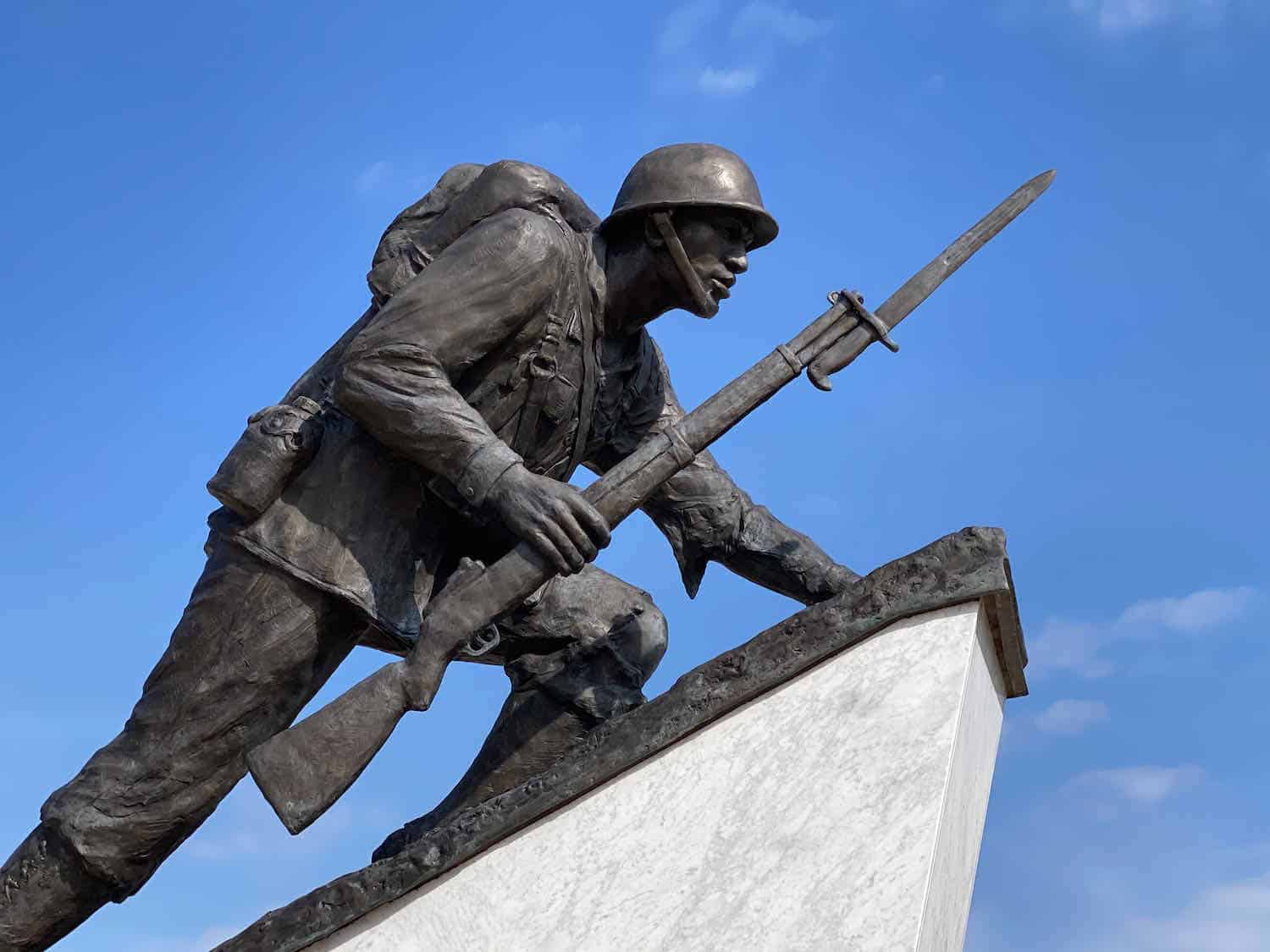
The highlight of the Memorial Gardens, at least for me, was learning the memorable story behind the Montford Point Marine Memorial. This statue honors the first Black Marines who were reluctantly admitted to the Marine Corps between 1942-1949, a time of segregation.
The Black Marines had to “fight for the right to fight” while training in a nearby segregated base, now named Camp Johnson. The group’s importance was acknowledged after their distinguished action during the battle at Iwo Jima.
Montford Point Memorial is also included on the African American Heritage Trail, along with 18 other sites. One of those is Ocean City Beach, established in 1949 as the first North Carolina coastal community in which Blacks could purchase land and enjoy the beach (segregated).
Going shrimping at Sneads Ferry
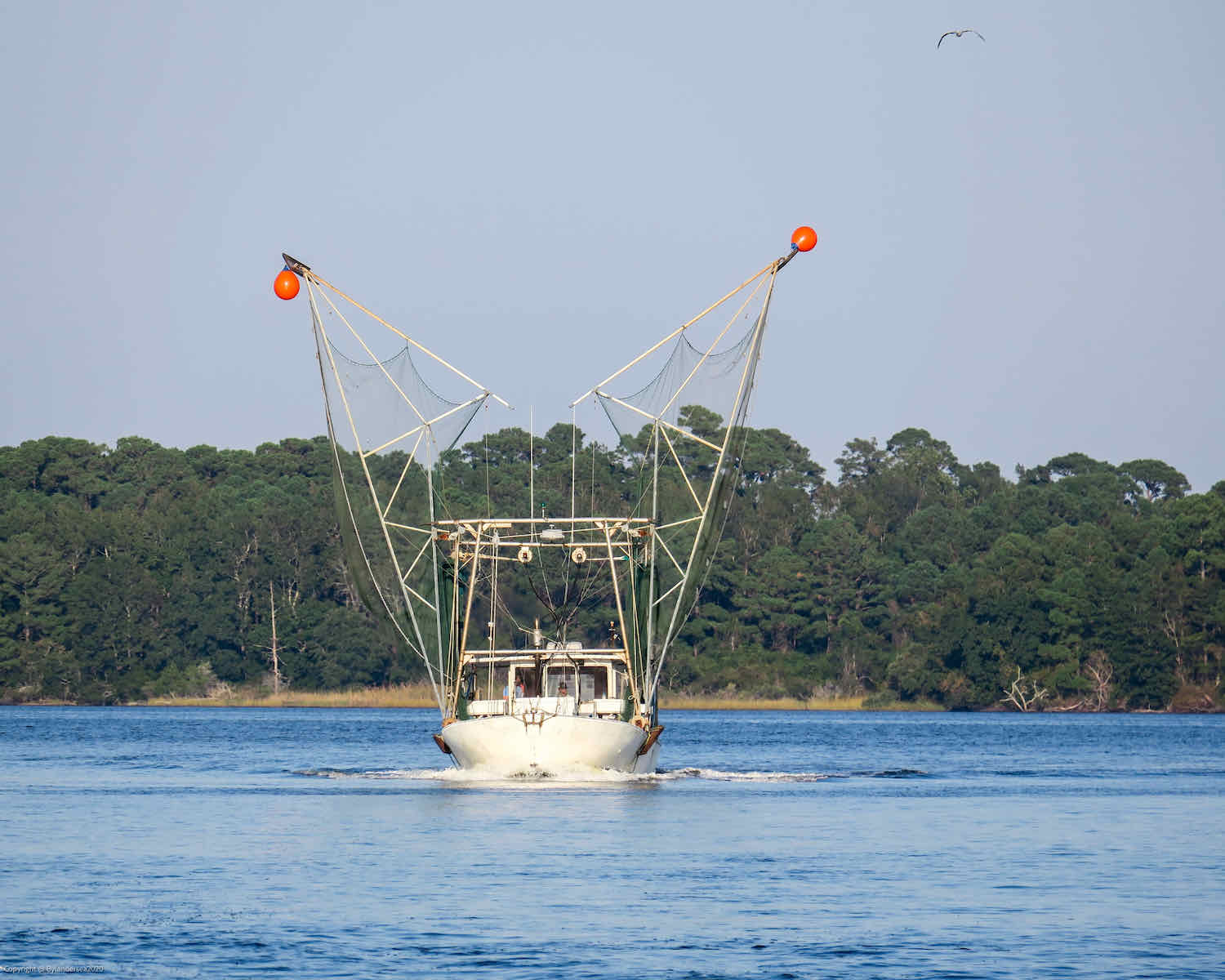
For a more lighthearted experience, I went to Sneads Ferry, the “Shrimping Capital of the East Coast,” to learn about the workings of a shrimp boat, the process of dragging the nets, and capturing shrimp.
My group of five met Captain TJ Jarman and his first mate, Danny, at the marina for a cruise along the New River. Depending on the season and the tides, charters depart during the day or evenings, but not on weekends.
We boarded the Faith & Hope, a 35-foot skimmer boat to cruise along the New River. The 50-mile river begins in Northwestern Onslow County, becomes an 2-mile wide estuary, then enters the Atlantic Ocean at Onslow Bay.
After a review of safety procedures, guests can grab a drink and relax. The crew welcomes them to sit in the front cabin. Still, there is a strong preference to stand aft (at the rear, for us landlubbers) to get a close-up view of lowering the frames (wings) into the water.
Jarman and the crew maneuver the boat, operating the hydraulic needed to deploy and return the massive nets. She’s a top-heavy vessel due to the skimmer frame’s height, so Jarman sets the pace at a comfortable 6-8 knot speed, then lowers the rate to 1.7 knots per hour just before the nets descend.
The nets drag through the water, creating a funnel that forces the shrimp toward the tail bags at their rear. Jarman uses two fish excluders that allow small fish entering near the tail bags to swim out. The crew carefully throws back any larger fish caught with the shrimp.
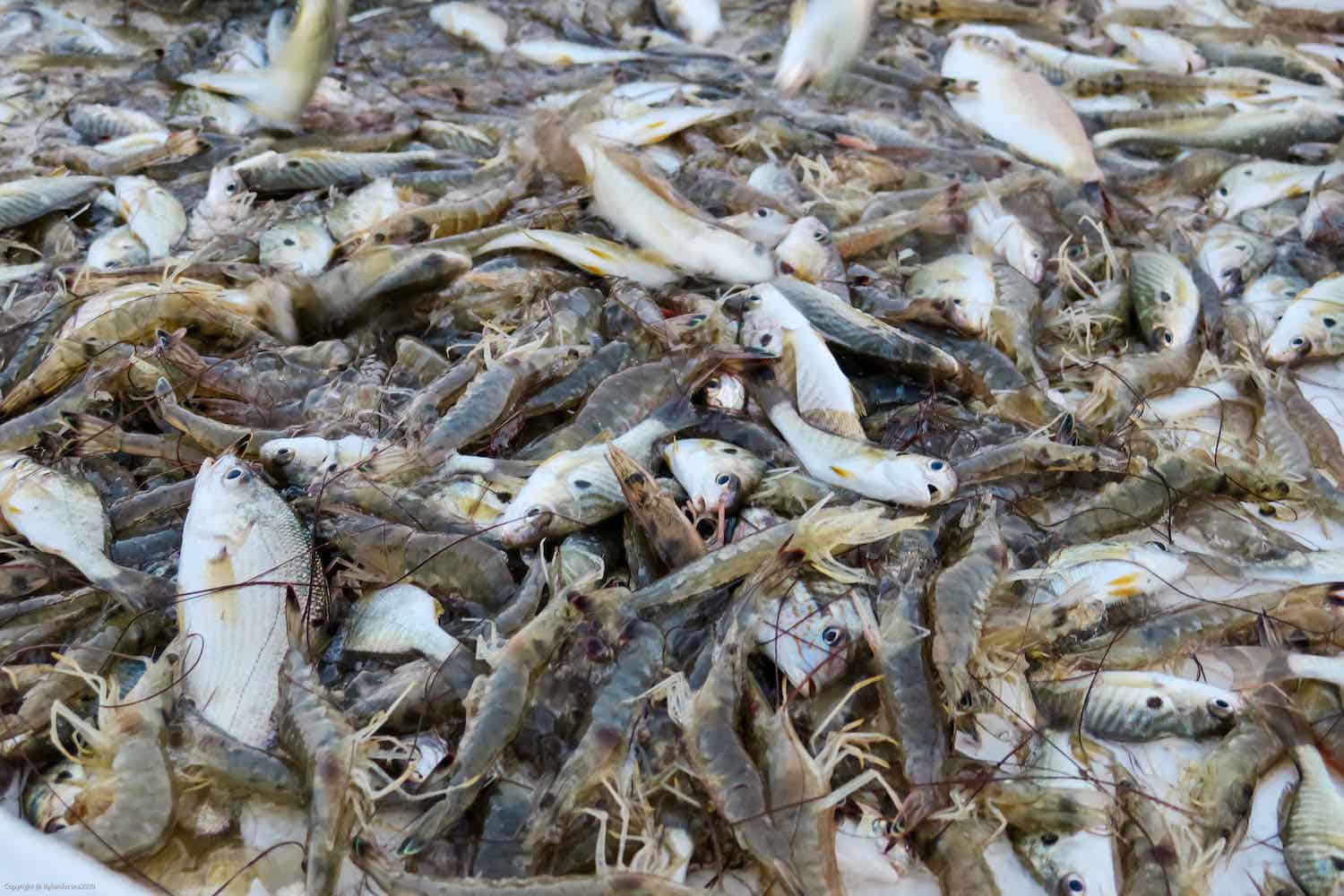
Unlike big trawlers that keep their nets down for an hour or two, Jarman pulls his after about 15-20 minutes. Anticipation builds as the catch is raised and the lively bundle emptied onto a large table. The moment calls all hands on deck, including guests.
The ensuing slimy scramble separates shrimp and crabs while the other fish are thrown back into the sea. (Rubber gloves and tongs thankfully supplied.) A wild jostling of marine life occurs: fish flip about, crabs scuttle fast, and water squirts and sprays everywhere.
The crabs go into a separate bucket from the shrimp. All the while, seagulls provide a loud soundtrack from above, but guests’ giggles and yips prove even more piercing.
Happily, once is not enough; the process repeats three or four times during the outing while the shrimp bucket fills and the surprises continue.
Everyone had a blast witnessing the operation and sorting the catch, but I personally learned much. First mate Danny told us the names of all the different fish species before tossing them overboard: pinfish, hogfish, and croakers the most popular.
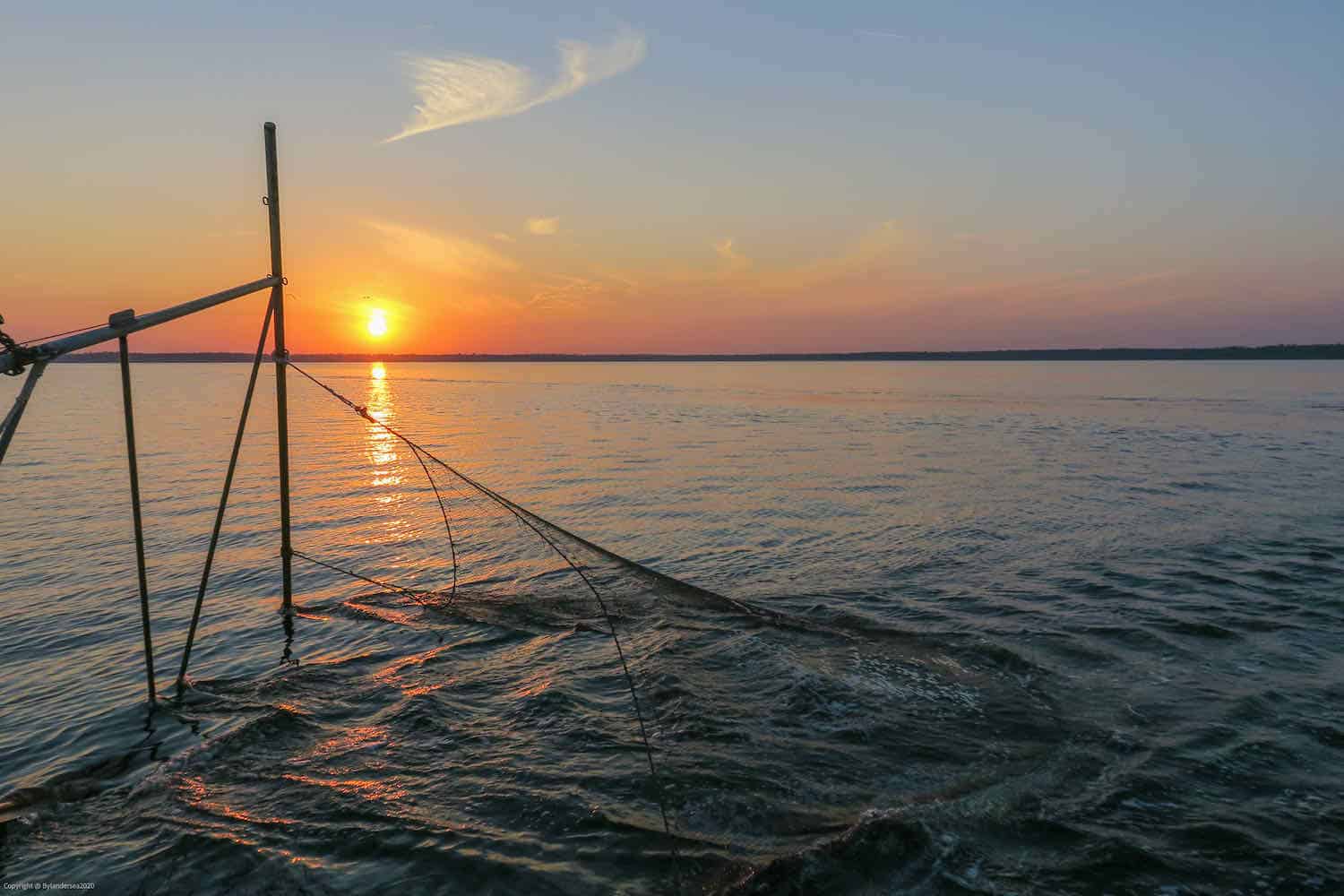
The New River offers two seasons for shrimping; one in midsummer for brown shrimp, and the other in the fall, usually late August through October for white shrimp. Charters cost $400 total for a 4-hour trip, but the price can vary depending on the group’s needs.
Guests go home with up to 50 pounds of the freshest shrimp you will ever eat, and perhaps crabs and flounder, depending on their size. The remainder goes to the Captain and the crew. Boomers—consider chartering the shrimp boat for family and grandkids.
Sneads Ferry Shrimp Festival
Shrimp lovers should mark their calendar for the annual Sneads Ferry Shrimp Festival, held every year on the second weekend in August, the peak shrimping season. The Festival began in 1971 to honor the fishing village.
This lively two-day event, spread over ten acres, includes a parade, the Shrimp Festival Kings and Queens pageant, a shrimp heading contest, a car show, several military exhibitions, music, and, of course, lots of shrimp. Annual attendance runs over 10,000 people.
Explore North Topsail Beach, Carolina’s surf city
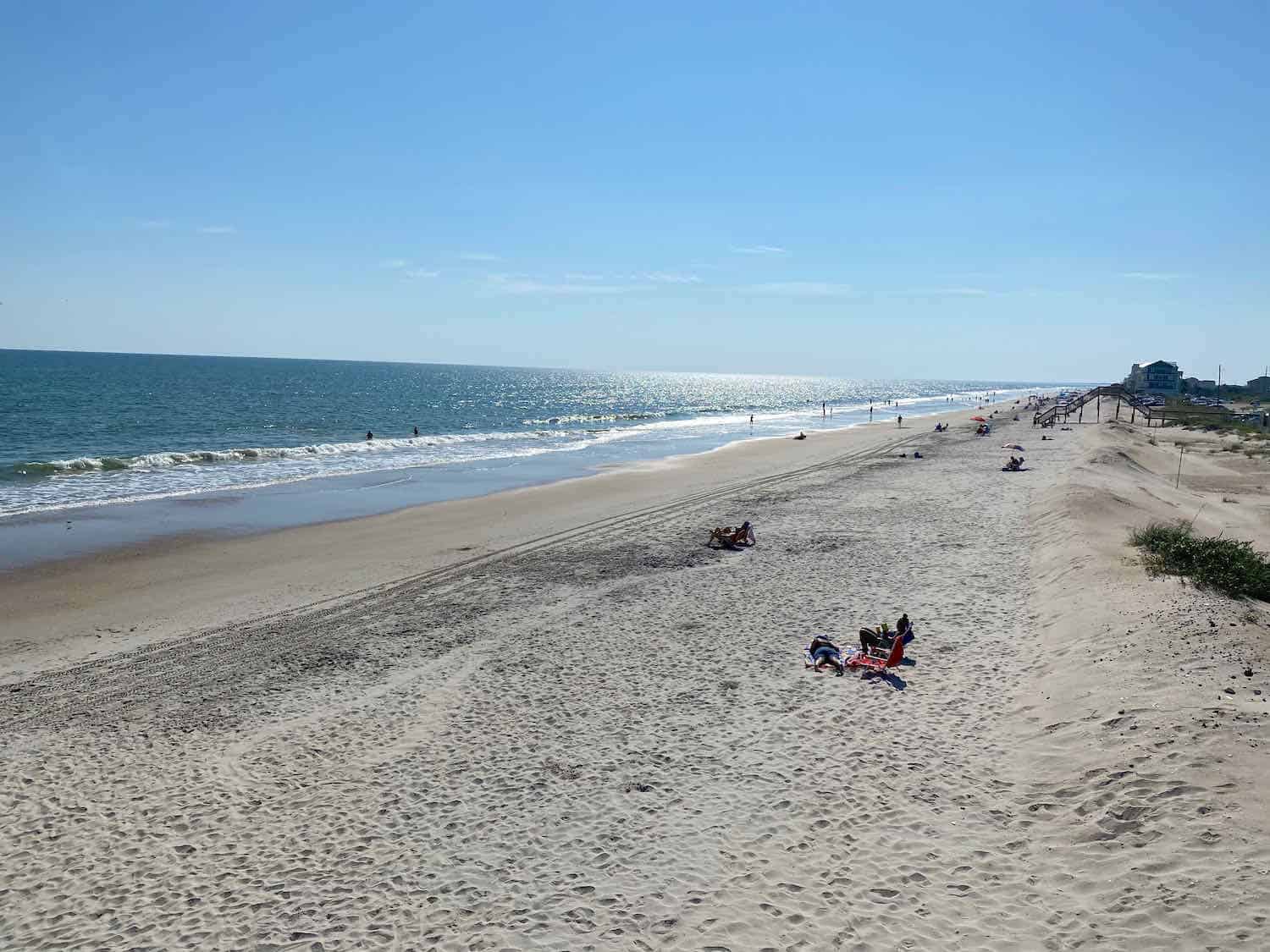
Beach lovers need to discover the town called North Topsail Beach. Think of it as Carolina’s Surf City.
Drive across the high-rise bridge onto Topsail Island and immediately catch awe-inspiring ocean views and a string of colorful beach cottages– on an uncrowded beach. Rumors persist that Blackbeard, the pirate, buried treasures on Topsail Island while hiding his boat between the island and the mainland.
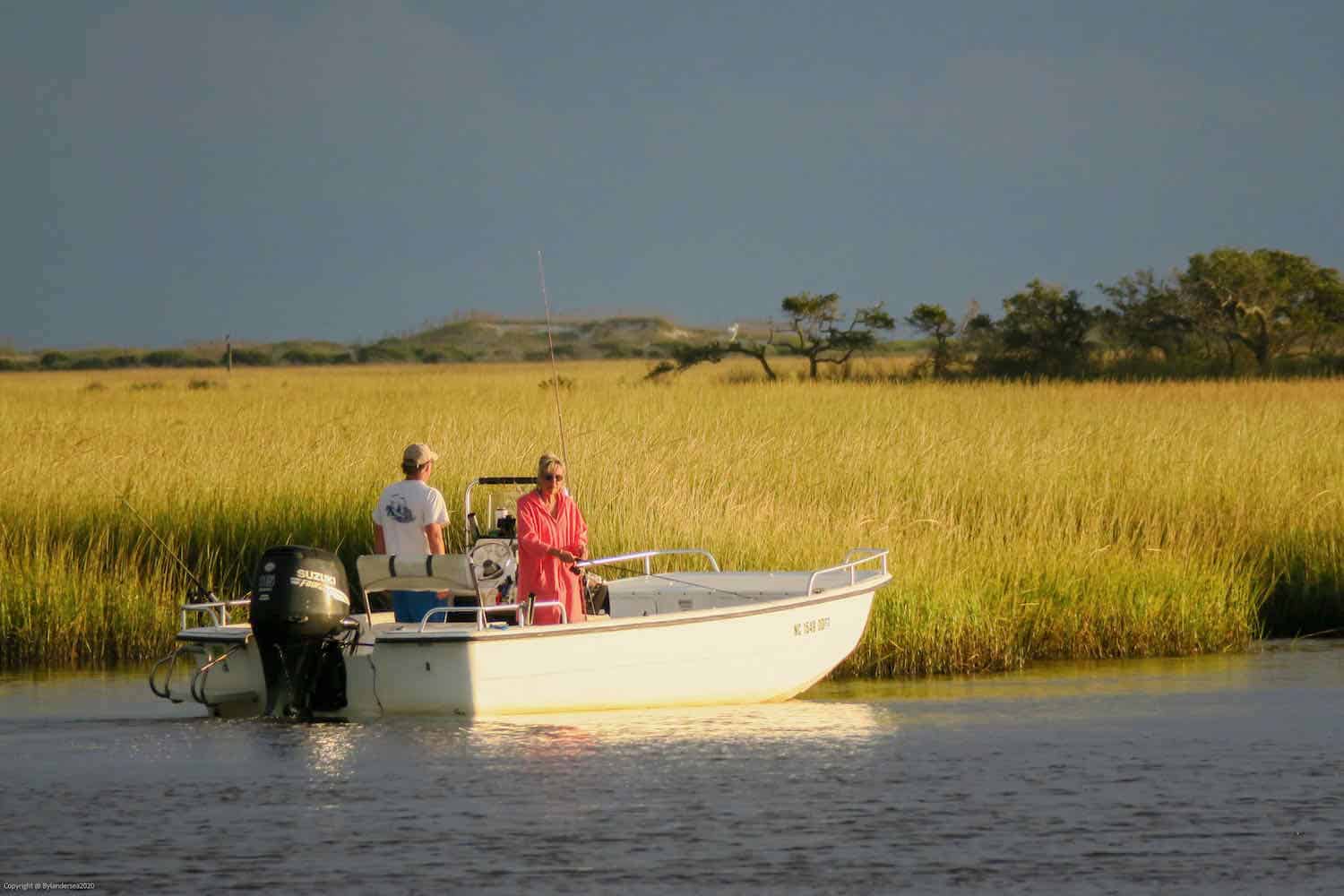
The combination of warmer waters from the Gulf Stream and the cooler inshore waters provides anglers great opportunities year-round. Many folks fish right on the beach. FYI – Fishing licenses are required, but not from the pier or while fishing on charter boats.
With the Marines nearby, every now and then, the beach’s peaceful silence is broken by the sound of helicopters. They come from the Marine Corps Air Station New River, banking over the island during practice runs.
Beach lodging choices include hotels, family-run motels, ocean-front cottages, multi-level rental homes, and luxury resorts. Villa Capriani and the St. Regis offer two- and three-bedroom beachfront condominiums, indoor and outdoor pools, a fitness room, a children’s playground, and on-site restaurants.
Enjoy historic Swansboro
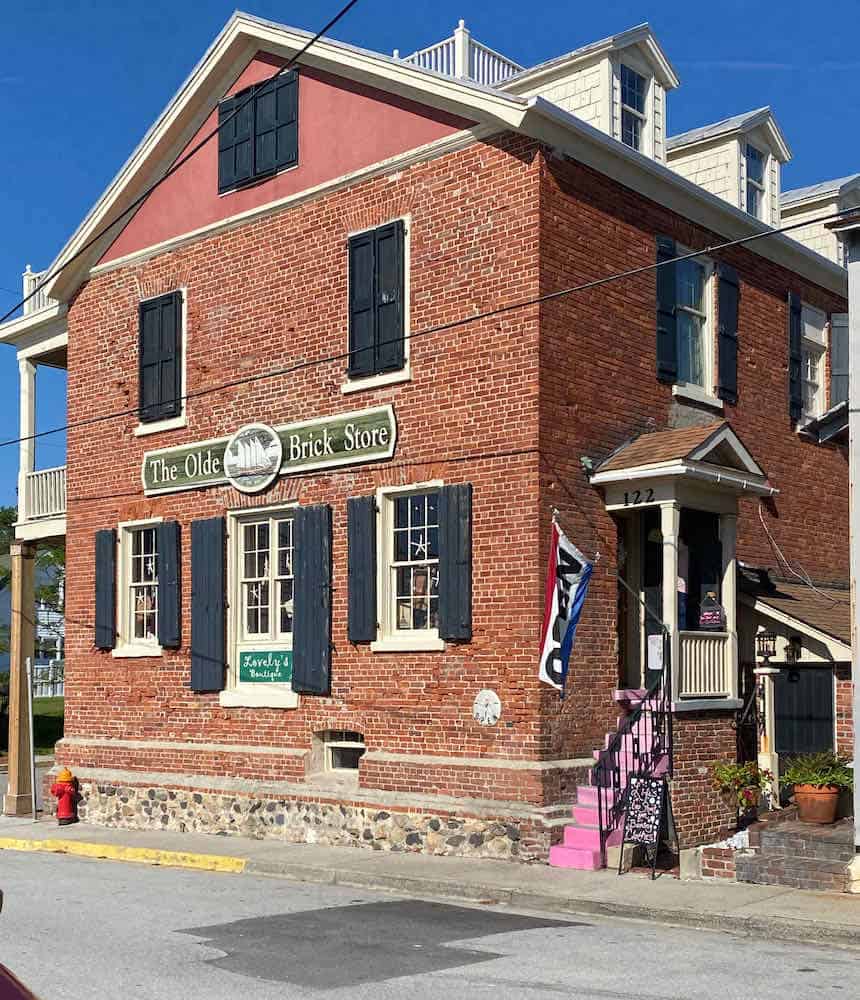
Swansboro, my favorite town in the area, edges the water at the confluence of White Oak River and the Intracoastal Waterway. Walk along paths where local historians say patriots and pirates strolled. The old-fashion Main Street presents historical and old brick buildings transformed for today’s shoppers.
Settlers first came to Swansboro around 1730, founding a community on a former Algonkian Indian village. Shipbuilding became the primary industry, and the port continued to prosper until the Civil War.
Then, the shipping industry declined, but lumber and naval stores kept the town going. After the Great Depression in the 1920s, the town’s people turned to another natural resource, the sea, and the commercial fishing industry’s development.
Downtown Swansboro offers a variety of boutique shops and casual restaurants, many with seaside dining tables. I love the absence of chain restaurants; most are chef or family-owned establishments.

My favorite Swansboro restaurant, the Saltwater Grill, becomes an ideal spot for a casual but romantic dinner. For breakfast, be sure to stop in Yana’s, Ye Old Drugstore Restaurant, the place to get yummy fruit fritters decorated with whipped cream and cherries. Isn’t it better to eat dessert first?
Visit Hammocks Beach State Park and Bear Island

Like North Topsail Beach, many families come to vacation in Swansboro on an annual basis. They typically make a day-long outing to Hammocks Beach State Park (official website)and Bear Island.
The large Hammocks Beach Visitor Center employs park rangers who offer interpretive programs. You can learn about park ecology and wildlife, including endangered sea turtles and nesting shorebirds.
Catch the Bear Island Ferry behind the Visitor Center to arrive at the crown jewel of the park. Four-mile-long Bear remains an undeveloped barrier island accessible only by the park’s passenger ferry, private ferry, or by paddling a canoe or kayak.

At Bear Island, you’ll find a wide beach between massive dunes and the ocean. There are also primitive campsites and a modest concession/picnic complex at the ferry dock.
Rent or bring your own kayaks, canoes, or paddleboards to explore the island’s paddling trails. However, relaxing on the beach, shelling, swimming, and fishing are the most popular options.
Get out on the water in Swansboro
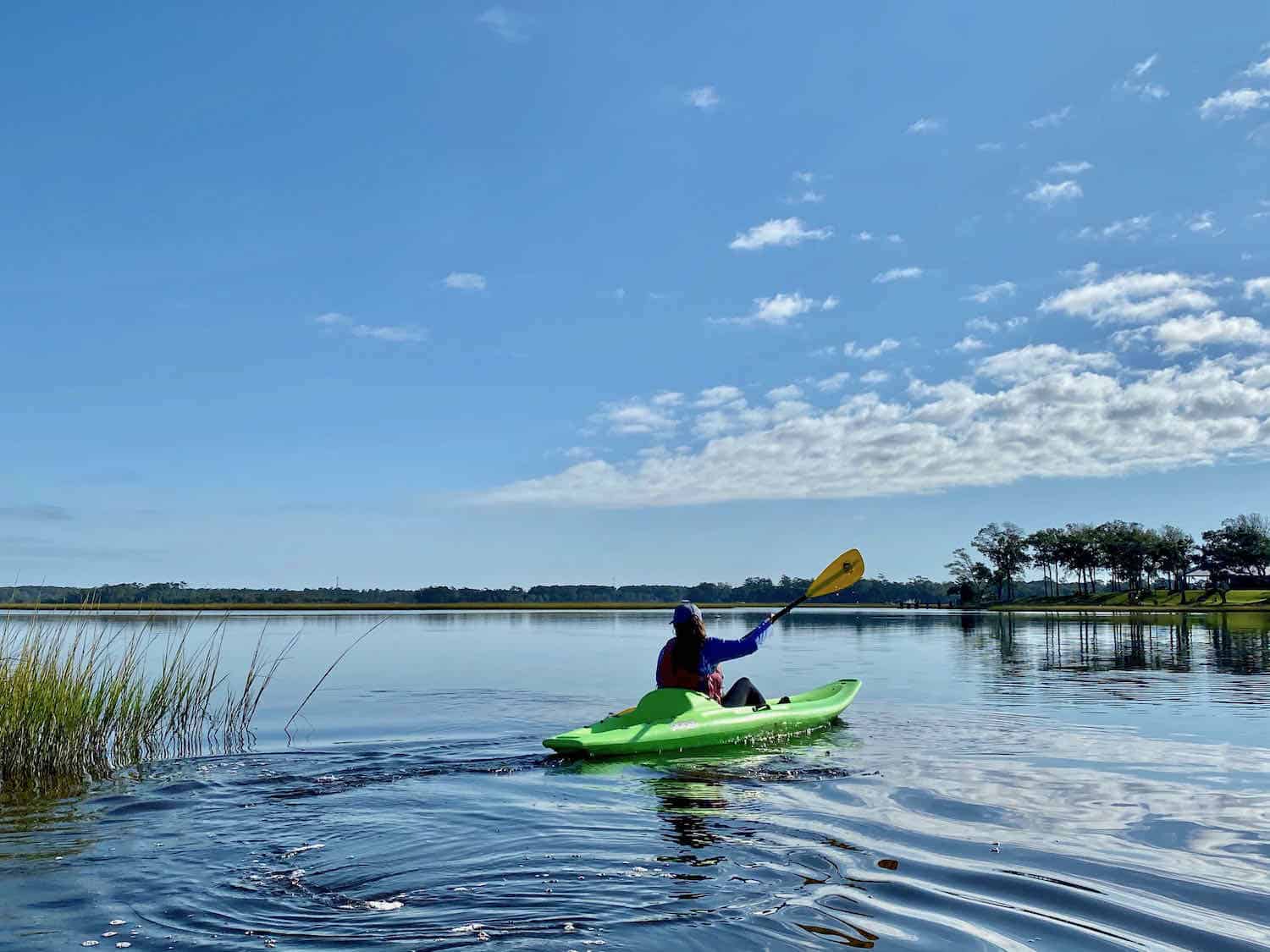
Swansboro is a popular destination for transient boaters. The town offers three public docking facilities in the downtown area.
Even if you don’t own a boat, numerous options are available to get you out on the water. Rent a kayak or sign up for a guided kayak tour in downtown Swansboro at Pogie’s Fishing Center. You paddle along the White Oak River and cross over the Intercoastal Waterway, seeing many shorebirds.
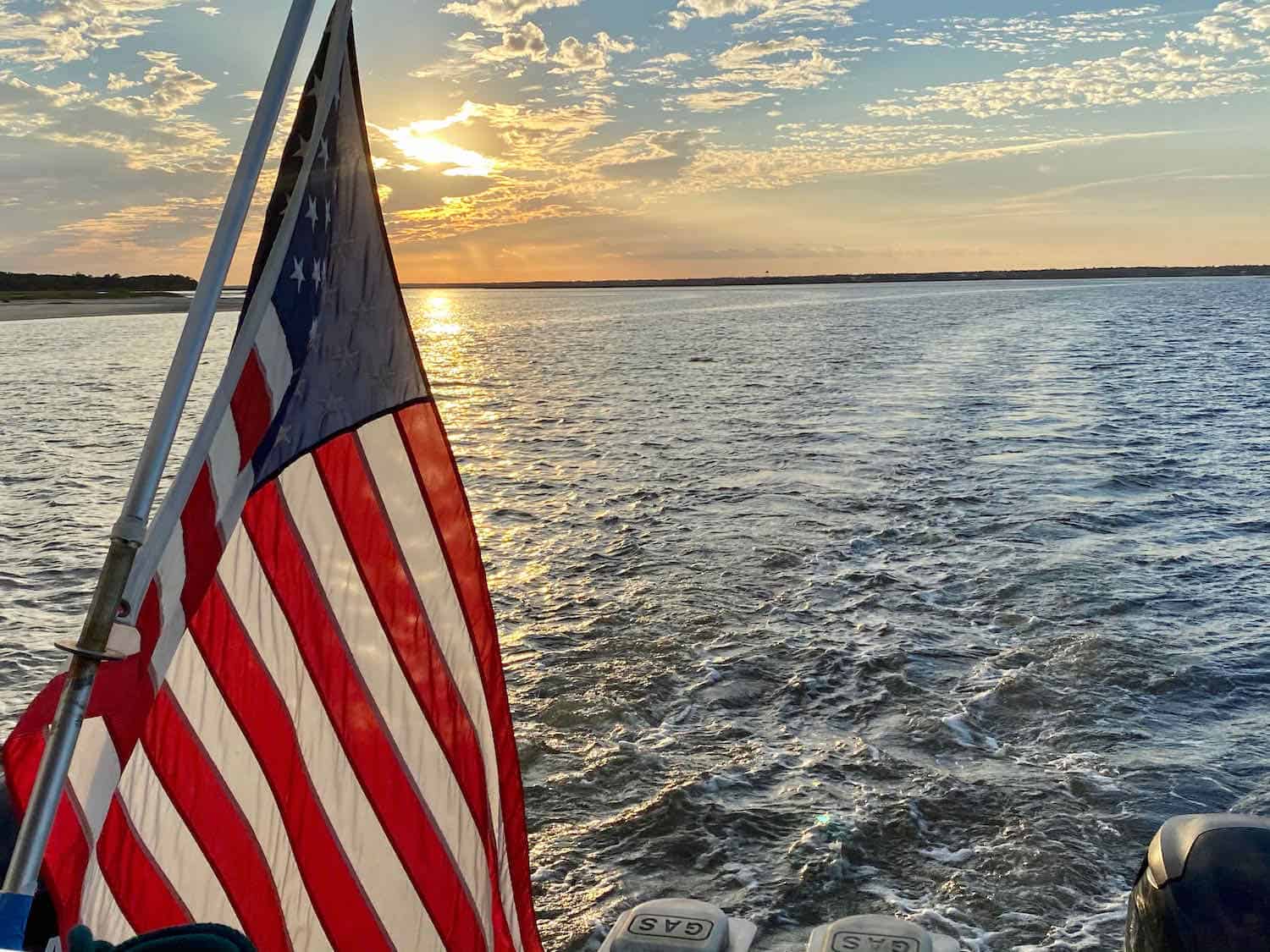
A Lady Swan Boat cruise, run by husband and wife team Jane and Tim Simpson, allows guests to sit-back and enjoy some Lowcountry views. Being out on the water for a sunset cruise on the Lady Jane Swan Boat makes a memorable evening.
Swansboro Mullet Festival
Swansboro hosts an annual Mullet Festival the second weekend in October along their historic downtown. This is one of the oldest festivals in North Carolina. The Festival started in 1954 to celebrate the new bridge’s opening in town and has grown to attract approximately 20,000 people.
Discover history at Huggins Island

Huggins Island, another nearby small barrier island, entices with haunting windswept trees in an unspoiled maritime swamp forest.
Though uninhabited now, Huggins Island carries a rich history. Initially as Native American fishing and hunting grounds, to later becoming home to a Confederate six-cannon battery.
Confederate authorities wanted to secure the strategic location, so they constructed an earthen-work fort in December 1861. Three months after the canon were needed in New Bern and the site was abandon.
Though insignificant in the Civil War—built and occupied for only three months—the site holds greater importance today. It’s the only unspoiled example of Confederate earthwork fortification surviving on the North Carolina coast and a protected maritime forest.
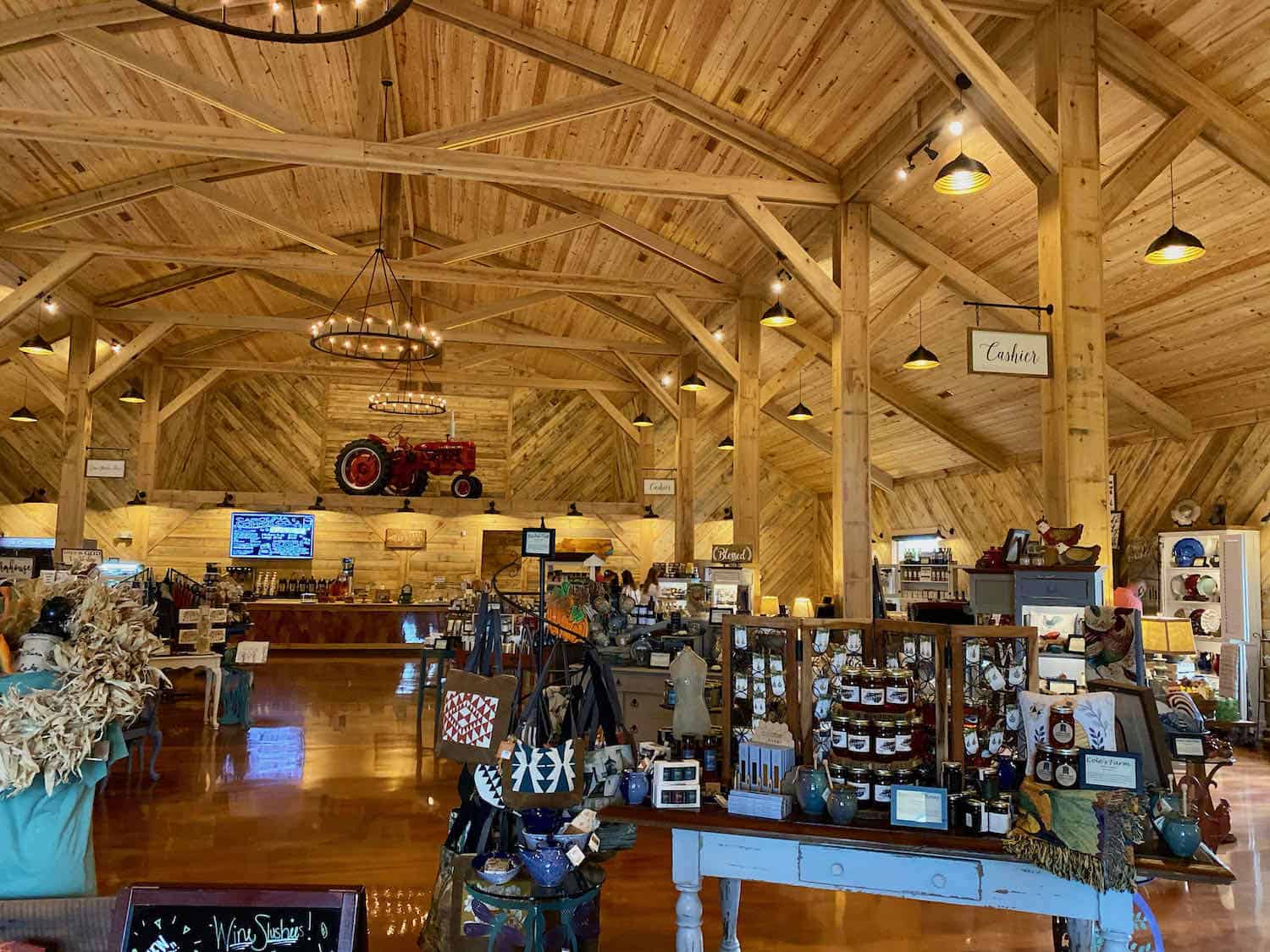
Head out of the city before leaving Onslow to visit Mike’s Farm, a family-oriented agri-tourism business. Mike’s Farm includes a family-style dining restaurant (farm-to-table, of course), product barn featuring North Carolina-made items, a delicious bakery, seasonal hayrides, and pumpkin patch, a Christmas tree farm, and much more. Officially Mike’s Farm carries a Beulaville address.
If you are looking for a North Carolina coast road trip that travels to an uncrowded vacation destination, Onslow County makes a great choice. The average summer temperatures register a comfortable 78.6 degrees, and winter runs at 47.3, so you can enjoy Onslow just about any time of the year.
More Southeastern U.S. coastal road trips
Once your Onslow county road trip adventures are done, extend your trip with these ideas:
- Visit the Outer Banks on a motorcycle
- Take a Lighthouse road trip on the Outer Banks
- Go roadtripping through the Lowcountry
- Explore Georgia’s Golden Isles

